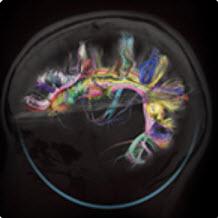
The National Institutes of Health is hosting the Multimodal TMS Speaker Series to bring together the leaders in the field conducting research using non-invasive brain stimulation and functional imaging including EEG and fMRI.
Hartwig Siebner will be speaking on October 17th, 11:30 am.
The event will be broadcast via web-ex and archived for later viewing.
Talk title:
To target or not to target that is the question.
Abstract: The human brain can be stimulated with a wide range of non-invasive transcranial brain stimulation (NTBS) techniques. These methods have great potential as neuroscientific and therapeutic tools, but their application is hampered by substantial intra- and inter-subject variability of the acute and outlasting NTBS effects on human brain function. In my talk, I propose a “target-definition-and-engagement” framework that might help to better unfold the unique potential of NTBS as an interventional tool.
(i) The first step requires a clear definition of what constitutes an optimal target for NTBS, given the scientific or therapeutic challenge. In this context, “target” refers to a physiological process that is hypothesized to be critical to a given brain function in the healthy brain. In a therapeutic context, a “target” can be conceptualized as a neural process that plays a central role in the pathogenesis or pathophysiology of a given brain disease or a process mediating resilience or recovery.
(ii) Once a “target” has been identified, it is necessary to specify its spatial and temporal expression in the brain. Only if this has been clarified, we can decide whether the “candidate” target is a realistic target. One needs to be sure that a given NTBS method selectively “engages” the candidate target and shapes its spatiotemporal expression in the brain. One also needs to secure that the NTBS-induced target modifications induce desired and sustained effects, improving brain function and resulting in a relevant therapeutic benefit.
(iii) This requires an iterative approach which models and maps the actual functional impact of a given NTBS protocol on the pre-defined “brain target” both, at the group and individual level. This information can then be fed back and used to tailor and optimize the NTBS intervention.
I will exemplify the need for a stringent “target-definition-and-engagement” framework referring to previous lines of NTBS research which were designed to target “cortical excitability”, “connectivity” or “oscillatory activity”.
Additional Event Information:
